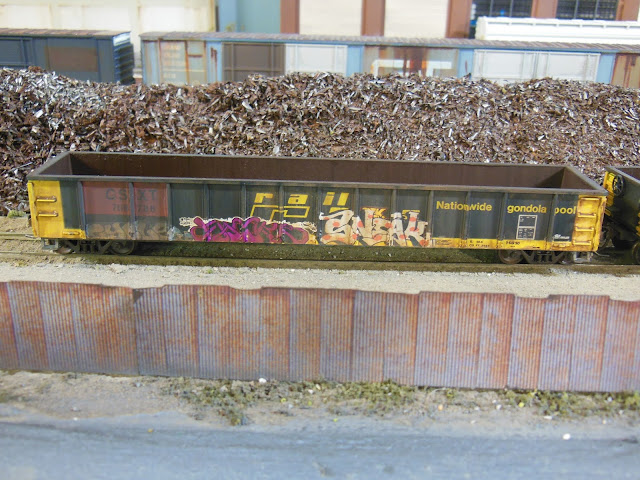Here we have Brian Smiths B36-7 again, in this view it`s sitting out on the JSSX shop track. You can tell that it`s been finished it up because the green tape is removed from the windows. For me, that`s the final step in the process.
Luc saw this locomotive here yesterday, and had a good idea for it as well. He suggested putting CSXT lettering beneath the numbers on the cab, as that was what was on the prototype at one time. A real good idea, but if I did that, I would likely only be putting that lettering on the engineer`s side. And I would then put a strike-through line through the letters to help show it doesn`t belong to CSXT any more. So it would appear something like this: CSXT
But, the problem with all that right now is that I don`t have any white letter `X`s remaining on my decal sheets. Microscale only puts 3 `X`s on a lettering sheet, and those tend to get used up pretty quick around here.
Anyway, here are a few looks at the engine as it is...

















